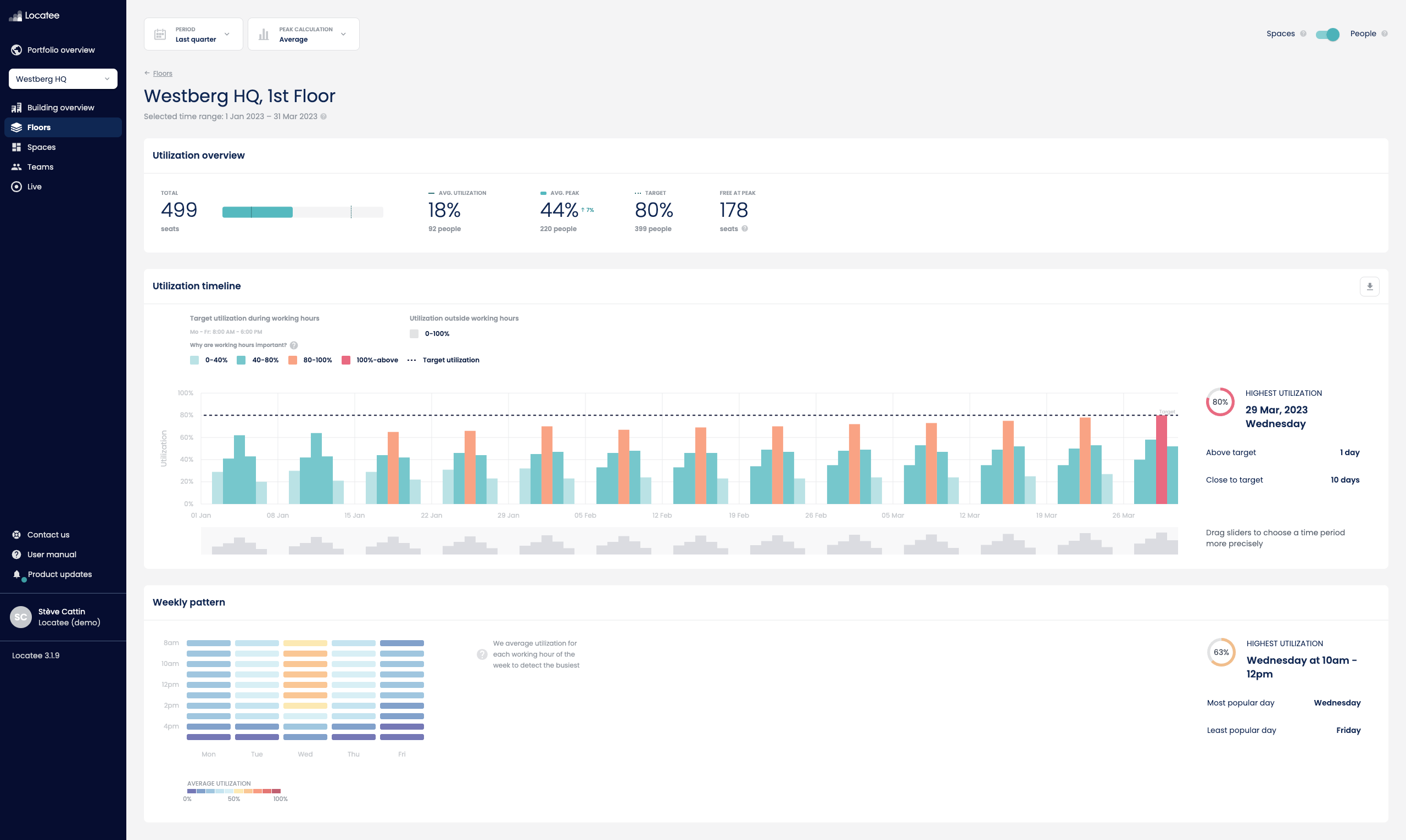Earlier this year, Locatee commissioned a study to get the perspective of 50 executives on the changing state of corporate real estate in the United States. Locatee’s Thought Leadership and Research Manager, Sabine Ehm joined Industry Analyst, Dayann Charles, to take a deeper look at the results of the eye-opening study. Here are some of the webinar’s highlights!
The changing role of the CRE manager
The role of CRE has become far more prominent over the last year. Companies scrambled to predict how the role of the office would change in the midst of COVID-19. Meanwhile, employees in CRE roles had a thorough understanding of office usage prior to the pandemic. With their broad overview of company assets, employee roles and space usage within the office over time, corporate real estate managers have rightfully been included in the conversations surrounding the future of the office.
Unfortunately, even with the current state of corporate real estate, CRE managers rarely have the final say on big decisions. More than a year after the shift to work from home began, they still have to jump through many hoops to make their visions a reality. Not only do they have to get budgetary sign-off from people above them, they are likely to be dealing with colleagues that don’t have such a comprehensive picture on how the definition of “workplace” is evolving.
Big goals, limited action
With a higher level of influence and new KPIs to focus on, you might expect huge changes in the workplace. Surprisingly, most CRE executives actually expect to see very little change in office set-ups over the coming years.
Many respondents support an activity-based work environment. Generally, they don’t find the standard fixed-desk model to be conducive to employee satisfaction and believe it’s important to redesign their office portfolio. However, according to the responses, there will only be a 4% shift to a more flexible office environment.
There’s a big disconnect between CRE ambitions and the actual actions by managers. Moving forward, it will be critical to find ways to turn these dreams into realities.
Band-aids instead of long-term solutions
Sabine and Dayann agree that some actions that companies take are more of a band-aid than a solution. Some examples, like infrared cameras, are more clearly a short-term answer to the problem at hand. Once things go back to normal, these won’t be useful as they only serve the purpose of measuring temperatures. Additionally, they’ve already been subject to scrutiny due to privacy laws. Other examples are less obvious.
Desk booking is a common topic in the world of CRE these days. Sabine sees this as a tool that could actually worsen existing problems in the office. In many cases, requests for desk-booking are a result of inquiries from other departments that only have a surface-level understanding of the inner workings of office space utilization.
If the goal is to ease employees back into the office and help them feel comfortable, companies may prefer to look at more straight-forward options like Space Booking. These work together with other tools to bring people back to work safely, while collecting the accurate information needed to make lasting changes.
Advocate for change
The results of the survey clearly show that more can be done by CRE managers to adapt their workplaces to the changes we’re seeing. Of course, this is something that’s easier said than done.
As Sabine points out, the ultimate goal is to build a case that is convincing.
The first step in making change happen is to have real evidence. By collecting data, you have indisputable facts as to why the changes you’re advocating for should be made. Be sure to include secondary-benefits that the company could see as a result of the changes you want to implement. Financial savings, building consolidations, or more productive employees could all be factors that influence a company’s decision.
You may also find it useful to keep track of ongoing decisions. That way you have a guideline for which steps to take to instigate action.
Lastly, don’t be scared to involve more people. Support from other departments not only makes your evidence more convincing, it adds pressure on those making the final decision.






